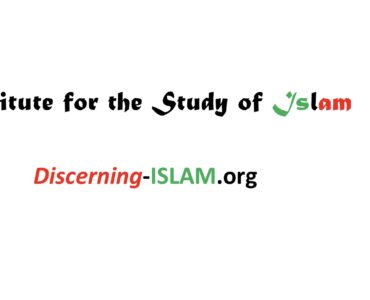
Eastern Sudan
The defeat of the Arabs in 652 before the walls of the Nubian capital was the worst that they suffered during their conquests. The Nubians were able to resist the Muslim expansion to the south for almost six centuries. Arab and Muslim penetration into the country south of Egypt was not by means of military conquest but through gradual infiltration. Slave raiding and gold mining brought Arabs to the land of Béja, between the Nile and the Red Sea. Immigrant Arabs who became absorbed among the northern Béja developed bilingual communities of mixed descent, which during the tenth century were the first Béja Muslims. By the tenth century Muslims represented a quarter of the merchants in the capital of the Christian kingdom of Nubia. In the tenth and eleventh centuries the Fatimid rulers of Egypt were anxious to push the Arab nomads of the Banu Hilal and related tribes away from the cultivated lands of Egypt. Most of the Banu Hilal moved west toward North Africa, while others penetrated the northern parts of the Christian kingdom of Nubia. By 1174 this zone had a majority of Muslims and was recognized officially as an Islamic province under an Arab dignitary known as Kanz al-Dawla.
As the Christian kingdom was disintegrating, the Mamluk sultan of Egypt and Syria, Baybars (r. 1260–77), sent a force in 1276 that conquered Makuria (in the Sudan). As “protected people,” the Nubians were allowed to keep their Christian religion. The Egyptians appointed a member of the old royal family to rule in their name. Repeated attempts by the Nubians to shake off foreign rule were defeated and caused the reinforcement of Muslim garrisons. In 1324 Kanz al-Dawla seized the throne from the old dynasty and the country disintegrated into warring factions. During the time between the eclipse of the Christian kingdom around 1300 and the rise of the first Muslim states around 1500, the pastoral communities who inhabited the extensive lands beyond the irrigated banks of the Nile were free of any political authority. The central lands of eastern Sudan were dominated for more than two centuries by the sultans of the Funj dynasty of Sinnar. It is said that the Ottoman sultan Selim (r. 1512–20), who conquered Egypt in 1517, did not advance further south to conquer Sinnar because of the Islamic credentials of the first Funj sultan. Whatever the historicity of this tradition, it clearly indicates that from the beginning, Islam played an important role in the sultanate of Sinnar.
The court of Sinnar attracted immigrant holy men, who received generous royal patronage through royal grants of landed estates or through appointments to privileged positions. Holy men enjoyed various exemptions from taxation and rights of geographical mobility and personal security. The formal status of Muslim holy men in Sinnar was in between that of noblemen and that of commoners. An immigrant holy man held a higher status than a native-born cleric. Holy men who used their power to defend the interests of the common people enjoyed greater popularity than those who held official positions as courtiers and judges. Adherence to Islam in the sultanate of Sinnar was not individual; rather, it was corporate and communal, because all subjects of a Muslim ruler were assumed to be Muslims by definition, even without a formal act of conversion, and regardless of lifestyle. Disobedience to the king, however, implied rejection of Islam and therefore the community, and penalties were appropriate to apostasy and unbelief.
The next significant stage in Sinnar began in the third quarter of the seventeenth century, when the sultan of Sinnar established a fixed capital and built an impressive royal mosque. He also encouraged trade by sending caravans to Egypt and to the Red Sea port of Sawakin, which was controlled by the Ottomans. Before that, commerce had been a royal monopoly, and contacts with visiting merchants were only through royal agencies, at designated places near the capital. As trade became free of royal monopoly, an indigenous urban-based middle class developed, and new towns appeared at the beginning of the eighteenth century. Social and economic changes undermined the existing political system in Sinnar. The old matrilineal dynasty was overthrown in 1718. The Funj system, which had united the elite and enforced hierarchy among its members, gave way to the sale of titles and offices to competing warlords. In the second half of the eighteenth century these warlords engaged in internal civil wars.
In the new towns, people made wealth and achieved status through economic gains. For the new urban population, legally oriented interpretations of Islam offered authoritative paradigms of lifestyles. Islamic instruction, public prayers, and conformist dress gave the new urban-based middle class an entirely new cultural and ethnic identity as Arabs. Observance of the rules of Islam became the criterion to evaluate a person’s status as a Muslim. Following the conquest of eastern Sudan by the Egyptian ruler Muhammad Ali Pasha in 1821, this emergent middle class of Sinnar allied itself with the Turko-Egyptian regime. In Sinnar as well as in Darfur and Wadai, the two western states that emerged in the seventeenth century, the southern communities — known as Nuba in Sinnar, Fertit in Darfur, and Kirdi in Wadai — were compelled to pay taxes in the form of ivory, gold, or slaves. If they failed, they were liable to punitive raids and selective or mass enslavement.
Eastern Sudan
803 – 028
https;://discerning-islam.org
Last Updated: 04/2022
See COPYRIGHT information below.



